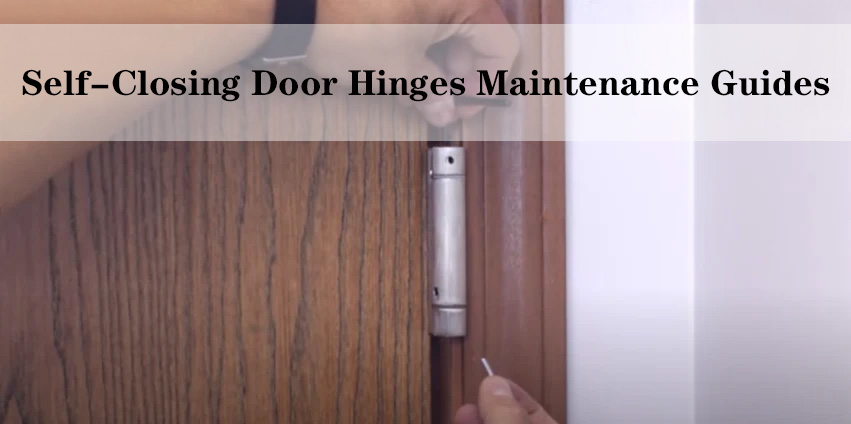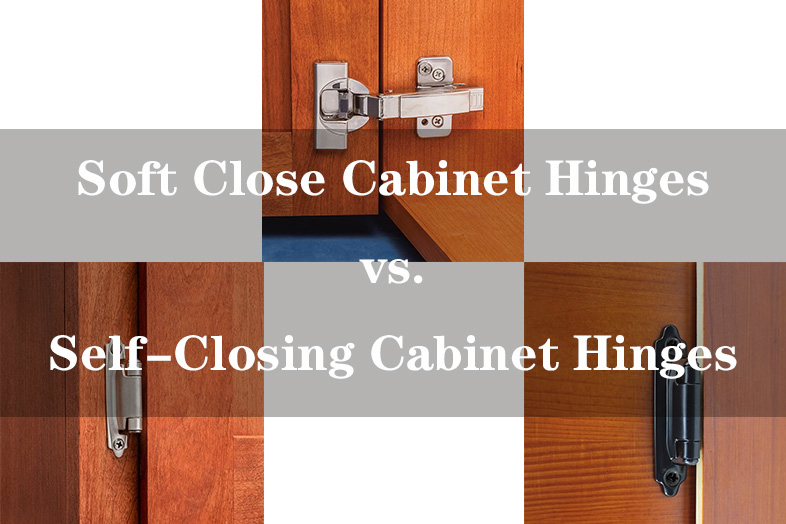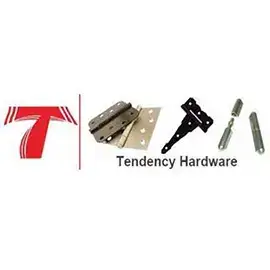When embarking on a project that involves doors, cabinets, or furniture, one of the less highlighted but crucial decisions is selecting the appropriate hinges. This choice is not just a matter of hardware; it impacts the functionality, accessibility, and even the safety of the doors or panels involved. In the vast landscape of hinge options, lift-off hinges and standard hinges stand out for their unique characteristics and applications. Understanding these differences is not just a technicality—it’s about aligning the mechanics of a hinge with the practical needs of your space. Whether you’re renovating a home, designing a commercial space, or working on custom furniture, the hinge you choose can significantly impact the usability and longevity of your project. In this expanded exploration, we delve deeper into the nuances of lift-off and standard hinges, shedding light on their mechanisms, benefits, and ideal use-cases, to empower you with the knowledge to make a choice that best suits your specific requirements.
What Are Lift-Off Hinges?
Lift-off hinges, also widely known as detachable hinges, are ingeniously designed for functionality and convenience. At first glance, they might look similar to traditional hinges, but their unique design allows for an effortless detachment of the door from the frame, all without the need for any tools. This feature is particularly valuable in environments where door removal is a frequent necessity, such as in high-traffic areas, cleaning-intensive environments, or spaces that require flexible access.
Anatomy of a Lift-Off Hinge
The magic of a lift-off hinge lies in its simple yet effective two-part design:
The Male Leaf: This component is typically attached to the door. It features a protruding pin or a post that forms the pivot point of the hinge.
The Female Leaf: Attached to the frame, this part has a hollow cylinder or a receptacle that snugly fits the male leaf’s pin. The precision of this fit is crucial for the hinge’s smooth operation.
When these two parts align and engage, they create a stable and functional hinge, allowing the door to swing open and close just like any other hinge. However, when you need to remove the door, all it takes is a simple lift. The door can be effortlessly lifted off, separating from the frame without any need for unscrewing or prying, minimizing the risk of damage to both the door and the frame.
Ideal Applications of Lift-Off Hinges
Lift-off hinges are not just a hardware choice; they are a solution to specific functional needs. Here are some scenarios where lift-off hinges shine:
In Homes and Apartments: For furniture or closet doors that need to be removed for deep cleaning, moving, or redecorating.

In Commercial Spaces: Especially in areas where flexible access or quick maintenance is required, such as in office partitions or storage cabinets.
In Public and Institutional Buildings: Schools, hospitals, and other buildings where doors may need to be quickly removed for safety reasons or for ease of transporting large equipment.
In Custom Designs: For bespoke furniture or cabinetry where non-standard door removal is a feature.
Advantages of Lift-Off Hinges
Easy Door Removal
Lift-off hinges offer unparalleled convenience in situations where door removal is necessary. This feature is particularly beneficial in homes or businesses undergoing renovations. Imagine the ease with which doors can be detached and reattached, facilitating the smooth movement of large items or machinery. During deep cleaning sessions, removing doors can provide better access to hard-to-reach areas, ensuring a more thorough and efficient cleaning process. This feature also proves invaluable for painting or refurbishing doors, as it allows for a more even application without the awkward angles and corners often encountered when painting doors in place.
Maintenance and Accessibility
The design of lift-off hinges significantly simplifies routine maintenance tasks. In settings like schools, hospitals, or offices, where doors may require frequent servicing or adjustments, these hinges save time and labor. They facilitate quick access for repairs or replacements, minimizing disruption in busy environments. Additionally, for spaces that need regular cleaning or inspections behind the door – such as storage rooms, utility closets, or machinery enclosures – lift-off hinges make these tasks far more manageable. The ease of door removal ensures that no area goes unchecked or uncleaned, promoting a higher standard of maintenance and hygiene.
Safety and Emergency Situations
In emergency scenarios, the quick removal capability of lift-off hinges can be a lifesaver. In situations where doors need to be removed for rapid evacuation or rescue operations, these hinges allow doors to be detached swiftly and safely, without the need for tools or special equipment. This feature is particularly beneficial in high-risk areas such as laboratories, industrial settings, or public buildings, where quick access or egress can be crucial. Furthermore, in the event of a fire or natural disaster, when seconds count, the ability to remove a door quickly can provide an essential escape route or access point for emergency responders.
What Are Standard Hinges?
Standard hinges, often referred to as butt hinges, are a fundamental component in both residential and commercial construction. Their simple yet effective design has stood the test of time, making them a go-to choice for various applications. Each hinge consists of two rectangular metal plates (or leaves) connected by a central pin or rod. One leaf is attached to the door’s edge, while the other is affixed to the frame, allowing the door to swing open or closed seamlessly.
The durability of standard hinges comes from their robust construction. Typically made from materials like steel, brass, or stainless steel, they are designed to endure the stress of frequent use and heavy loads. This makes them suitable for everything from lightweight interior doors to heavier exterior doors.
Their versatility extends beyond material and weight capacity. Standard hinges come in an array of sizes to accommodate different door sizes and weights. Furthermore, they are available in various finishes, such as brass, chrome, or powder-coated colors, allowing them to either stand out as a feature or blend in with the door and frame.
Advantages of Standard Hinges
Durability and Strength: Standard hinges are engineered for longevity and reliability. Their robust construction means they can support substantial weight, making them ideal for both heavy-duty industrial doors and everyday household doors. The strength of these hinges ensures that doors hang straight and true over years of use, resisting sagging and misalignment.
Variety and Versatility: One of the most significant advantages of standard hinges is their adaptability. They come in a range of sizes, from smaller hinges for light cabinet doors to larger, more robust options for entry doors. This versatility extends to their aesthetic appeal as well, with finishes that can be chosen to complement or contrast with the door and frame, fitting seamlessly into a wide range of interior designs.

Security: When it comes to security, standard hinges offer a significant advantage. Unlike lift-off hinges, the door cannot be easily removed when closed and locked. This feature is particularly important for exterior doors or any entry points that require enhanced security. The fixed nature of the hinge pin means that the door is securely anchored to its frame, deterring unauthorized removal and enhancing overall safety.
Key Differences
1. Removability
The aspect of removability is where lift-off and standard hinges diverge significantly. Lift-off hinges are ingeniously designed for scenarios where the door needs to be detached frequently and effortlessly. This feature is particularly advantageous in settings like modular homes, temporary access panels, or areas requiring regular maintenance. Unlike standard hinges, which necessitate unscrewing and potentially the use of tools, lift-off hinges operate on a simple principle: align, lift, and separate. This ease of disassembly not only saves time but reduces the risk of damage to the door or frame during removal.
2. Application
The choice between these two hinges also hinges (pun intended) on their intended application. Lift-off hinges are a go-to option in environments where door removal is a routine necessity. This includes spaces like laboratories, workshops, or even in homes for doors leading to narrow corridors or areas requiring large furniture movement. On the other hand, standard hinges are the stalwarts of permanent, secure installations. They’re ideal for front doors, high-traffic areas, and places where stability and security are paramount. Their design is tailored to withstand the test of time and usage, making them a reliable choice for most conventional settings.
3. Installation
Installation nuances also differentiate these hinges. Lift-off hinges demand a higher degree of precision during installation. Correct alignment is crucial to ensure that the two components of the hinge (the male and female parts) fit seamlessly and allow for the smooth operation of the lifting mechanism. Misalignment can lead to difficulties in door removal or even cause damage over time. Conversely, standard hinges are more forgiving during installation. While precision is still important, they do not have components that need to align perfectly for the door to function or be removed.
4. Aesthetics
Aesthetics play a significant role in the choice of hinges. Standard hinges are often designed to be unobtrusive, blending seamlessly with the door and frame, maintaining the aesthetic continuity of the space. They come in various finishes and styles, making them adaptable to a wide range of interior designs. Lift-off hinges, while functional, tend to have a more prominent appearance. Their unique design can be a visible aspect of the door’s design, which might be desirable in some modern or industrial aesthetics but could be less appealing in traditional decor.
Choosing the Right Hinge for Your Project
When deciding between lift-off and standard hinges, it’s essential to weigh your specific requirements:
Opt for Lift-Off Hinges When:
Ease of Access: Regular maintenance or cleaning necessitates frequent removal of the door.
Space Management: Areas where temporary removal of doors eases the movement of large items.
Safety Considerations: Quick door removal is needed in emergency situations or for safety protocols.
Choose Standard Hinges For:
Long-Term Durability: Heavy doors or high-traffic areas where hinge strength and longevity are crucial.
Security Needs: Entrances or spaces where added security against unauthorized entry is a priority.
Consistent Aesthetics: Settings where the hinge should complement the overall design and not draw attention.
In conclusion, the distinction between lift-off and standard hinges lies in their removability, application, installation requirements, and aesthetic impact. Lift-off hinges offer convenience and flexibility for doors that need to be frequently removed, while standard hinges provide robustness and security for doors meant to stay put. Assessing your specific needs, whether they be practical, aesthetic, or security-related, will guide you to the hinge that best aligns with your project requirements.
























